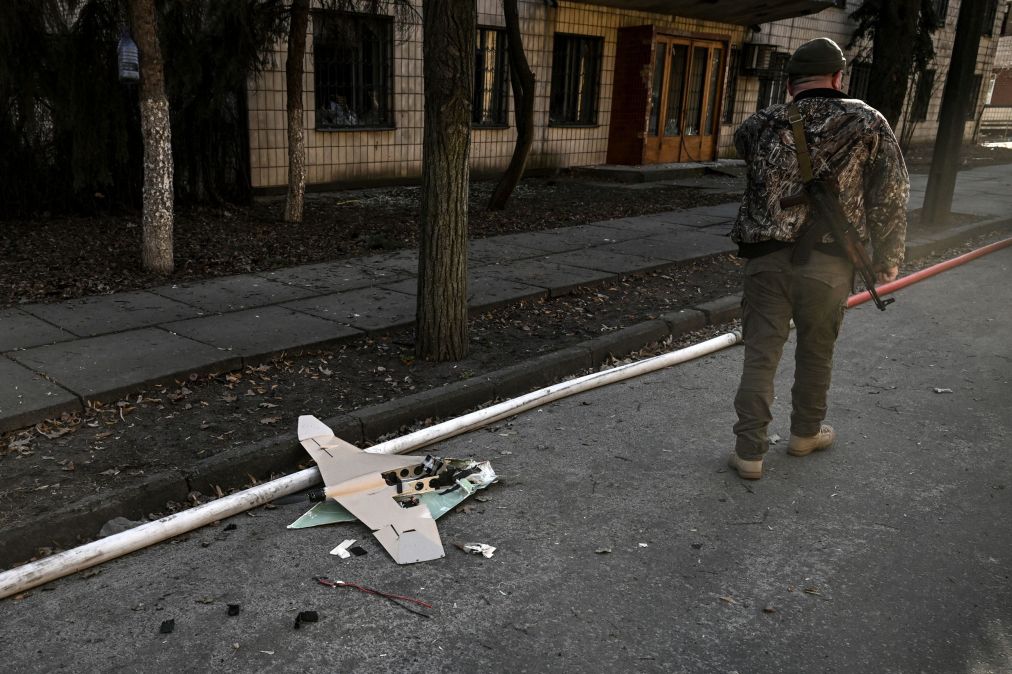NATO allies ‘don’t have enough data’ on impact of drones in Russia-Ukraine war: Estonian official

Editor’s note, Jan. 30, 2023: This story has been corrected to note that Estonia’s total contribution of military aid to Ukraine is valued at more than 1% of Estonia’s GDP.
Drones are proving to be instrumental assets to both the Ukrainian and Russian militaries as the war between them continues to unfold. But according to a top Estonian defense official, there’s still a lot of room for deeper analysis and discussion regarding how unmanned systems are transforming the landscape of modern combat.
“We all know that they are going to be used — or are being used — for surveillance purposes, for targeting purposes, and for weaponized platforms. We don’t know much about their performance against air defense. Frankly, we don’t have enough data,” Permanent Secretary of the Estonian Ministry of Defence Kusti Salm told DefenseScoop this week.
While in Washington to meet with U.S. officials and others to discuss war-related matters, Salm — the highest-ranking civil servant in Estonia’s Defence Ministry — briefed reporters on those engagements and other topics.
The Pentagon officials he met with during his visit included Undersecretary of Defense for Policy Colin Kahl, DefenseScoop confirmed.
Estonia is a strategic NATO partner with a strong digital infrastructure. It shares a 183-mile border with Russia, and is a close ally to Ukraine. The two nations share a history of living under Soviet rule.
This week, Estonia announced its largest-ever military aid package for Ukraine — worth roughly $145 million. The package includes Estonia’s entire stockpile of 155mm howitzers. The cumulative amount of military aid that Estonia has provided to Ukraine thus far — $370 million — is valued at more than 1% of Estonia’s GDP.
“It needs to be clear, strategically: There is no turning back. The security situation in Europe has changed, and we all need to live with this. Ukraine needs to win. It’s not only a slogan, it’s a pretty calculated sober calculation,” Salm said, adding that the future of European and transatlantic security depends on Russia being defeated.
Salm has served in multiple high-profile leadership roles, including as Estonia’s chief defense acquisition officer. He also helped establish a European Union-level research-and-development program on modular unmanned ground systems.
Drones have been a prominent feature of the Ukraine-Russia war, appearing in multiple operating domains including air and sea.
During his meeting with reporters, Salm told DefenseScoop that it’s notable how the Ukrainian military is using the unmanned systems for artillery fire correction, or to make its longer-range weapons more accurate — in addition to applying many commercially made drones for other purposes as well.
“It seems that they have been successful in doing this. One of the issues with artillery in European armies is that you’ve got a lot of barrels. And, in order for the ammunition to work in these barrels, you need to do the shooting to correct all the firing tables. But you can, you know, avoid this process — that is cumbersome, that takes time and is costly — by doing the live corrections. And the Ukrainians have been extremely clever in doing this,” he said.
This creativity has enabled them to “basically use all the different 155-types” of weapons that other nations sent over in support of Ukraine, Salm added.
However, he also noted that it’s been recognized for decades now that it’s possible to use drones for monitoring purposes and to shoot missiles. In his view, it’s still unclear how transformational they have been in the current conflict.
“In order to make definite conclusions of what has been the change — or what is the really the sort of critical impact on the battlefield — we need to get more [data] and we need to dig deeper into this,” Salm said.




